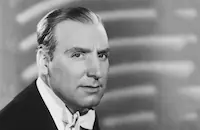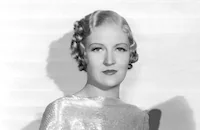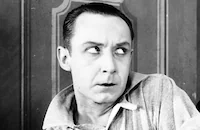Topper Takes a Trip

Brief Synopsis
Cast & Crew
Norman Z. Mcleod
Constance Bennett
Roland Young
Billie Burke
Alan Mowbray
Verree Teasdale
Film Details
Technical Specs

Synopsis
Meek New York bank president Cosmo Topper is hauled into divorce court by his wife Clara, who accuses her husband of adultery. In court, Topper explains how he met the "other woman," the ghost of Marion Kerby, after she and her husband George were killed in an auto accident. The judge throws the case out of court and Clara is coached by her troublemaking friend, Mrs. Parkhurst, to sail to France and get a divorce. Meanwhile, Marion, learning of her old friend Toppy's troubles, comes back to earth and forces the mild-mannered Topper to follow and fight for his home. They arrive at the Riviera to find Clara being courted by the fortune hunting Baron de Rossi. Weird occurences on the Riviera abound when Topper and Marion are forced to lodge in the same tiny room and Marion decides to win a bundle of money at the casino. The Baron loses his suavity as Marion resolves to remove him from Clara's life, and after a series of comic incidents, her campaign succeeds and the muddled Toppers are reconciled.

Director

Norman Z. Mcleod
Cast

Constance Bennett

Roland Young

Billie Burke

Alan Mowbray

Verree Teasdale

Franklin Pangborn

Alexander D'arcy
Paul Hurst

Armand Kaliz
Eddy Conrad
Spencer Charters

Irving Pichel
Leon Belasco
George Renavent
Skippy

Cary Grant
Duke York
Paul Everton
George Humbert
Alphonse Martell
James Morton
Torben Meyer
George Davis
Crew
Milton H. Bren
Norbert Brodine
W. B. Delaplain
Corey Ford
Hugo Friedhofer
Charles D. Hall
Marvin Hatley
Irene
Jack Jevne
Omar Kiam
Eddie Moran
Edward Powell
William Randall
Earl Rettig
Ernest Schrapps
Roy Seawright
W. L. Stevens
William Terhune

Videos
Trailer
Hosted Intro
Film Details
Technical Specs

Articles
Topper Takes a Trip
The critical and financial returns on Topper made a sequel an inevitability, and producer Hal Roach managed to reunite almost all of the principals for Topper Takes a Trip (1939). Grant's services were unavailable, and George Kerby's presence in the movie was therefore limited to stock footage in the opening recap. However, with the returns of Bennett, Young, Billie Burke, Alan Mowbray, director Norman Z. McLeod, screenwriters Jack Jevne and Eddie Moran, and special effects master Roy Seawright, Roach was successfully able to tap into the spirit of the original.
Conveniently ignoring the first film's climactic reconciliation between Topper and his dithery society matron spouse Clara (Burke), Topper Takes a Trip finds Mrs. T seeking a divorce in the wake of Cosmo's erratic, mortifying behavior, including his public appearances with another woman. After Topper's attempts to rationally explain that the other woman was merely Marion Kerby's ghost, Clara hops a cruise ship to Paris in order to expedite the end of their marriage. Marion, now somehow still stranded on earth along with the spectre of her dog Skippy, pushes Topper to follow his wife to the continent and beg her forgiveness.
The proceedings are helped along by a great cast of comic supporting players, including Franklin Pangborn, Verree Teasdale as Clara's snooty society friend, and Alex D'Arcy as the fortune hunter who targets her. 1939 saw the debut of the Academy Award for Best Visual Effects, and Seawright deservedly became a charter nominee for his efforts on Topper Takes a Trip; the sequences showing Skippy's penchant for wagging a disembodied tale were imaginatively executed. Roach would ultimately get Young and Burke into harness one last time for Topper Returns (1941), a more conventional haunted-house comedy, with the ectoplasmic hi-jinx being provided by Joan Blondell as a murder victim enlisting Cosmo's aid in unmasking her killer.
Bennett sprang from solid theatrical stock, the eldest of three daughters who followed their parents, stage and early screen luminaries Richard Bennett and Adrienne Morrison, into their profession. She signed her first film deal with Goldwyn in 1922 at the age of 17 on the strength of the family name, but abandoned Hollywood by the mid-'20s for a life of partying in international society. This lost its attraction for her within a few years, and she resumed her film career in 1929; within two years, her $300,000 two-picture pact with Warners made her the highest paid performer in the industry to that date.
While her professional star was waning by the mid-'40s, the determined and savvy Bennett broadened her focus, founding and running a cosmetic concern as her stage and screen appearances became more sporadic. In 1946, she had entered into her fifth and final marriage, to Brigadier General John Coulter; her final illness came when he was stationed at Fort Dix. She passed away from a cerebral hemorrhage not long after wrapping her last film performance as Lana Turner's mother in the 1966 version of Madame X.
Producer: Milton H. Bren, Hal Roach
Director: Norman Z. McLeod
Screenplay: Thorne Smith (novel), Jack Jevne, Eddie Moran, Corey Ford
Cinematography: Norbert Brodine
Film Editing: William H. Terhune
Art Direction: Charles D. Hall
Music: Hugo Friedhofer, Marvin Hatley, Edward B. Powell
Cast: Constance Bennett (Marion Kerby), Roland Young (Cosmo Topper), Billie Burke (Mrs. Clara Topper), Alan Mowbray (Wilkins), Verree Teasdale (Mrs. Parkhurst), Franklin Pangborn (Louis).
BW-85m.
by Jay Steinberg

Topper Takes a Trip
Quotes
Trivia
Notes
According to a news item in Los Angeles Examiner, producer Milton Bren had originally planned to have Cary Grant reprise his role as "George Kerby" from the 1937 film Topper. When he was unable to obtain Grant, Bren instead substituted a clip from Topper in which George has his fatal automobile accident. The onscreen credits read "grateful acknowledgement is expressed to Mr. Cary Grant for his consent to the use of scenes from the original film Topper. Roy Seawright was nominated for a Best Special Effects Academy Award. This was the second of three Topper films. For more information about the films, see entry above for Topper

Miscellaneous Notes
Released in United States 1939
Released in United States 1939















